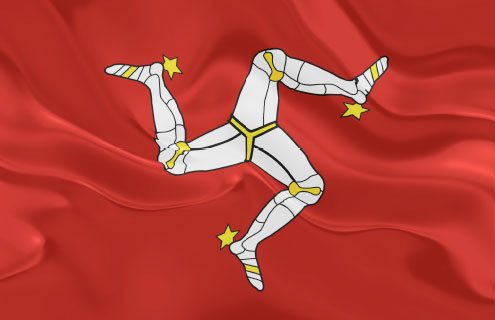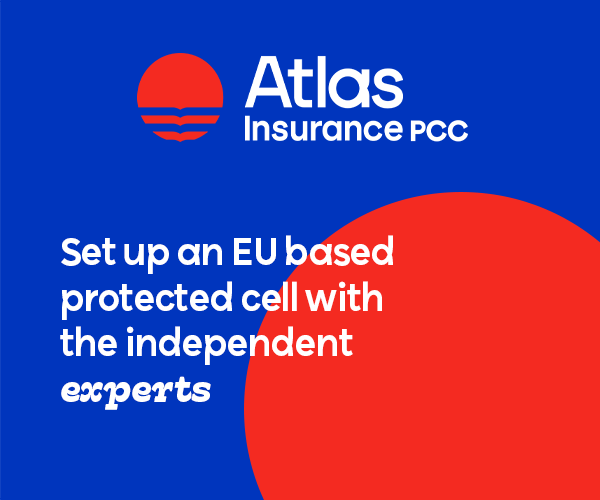Our domicile has set up a significant number of captives in the last few years. Our prime competition locally, as we are classed as an offshore jurisdiction, is Guernsey. Domiciles further afield such as Bermuda and the Cayman Islands, for pure captive business particularly, could also be viewed as competition.
Who is the main competition for the Isle of Man and how has the domicile fared in recent years?
Derek Patience: Our domicile has set up a significant number of captives in the last few years. Our prime competition locally, as we are classed as an offshore jurisdiction, is Guernsey. Domiciles further afield such as Bermuda and the Cayman Islands, for pure captive business particularly, could also be viewed as competition.
In terms of the offshore versus onshore debate, you could also say that we have competition in Europe from the likes of Dublin, Luxembourg and Malta. When parent companies are looking at feasibility reviews, if a captive makes sense then the next question is what should the structure be and where should it be domiciled? For some, onshore Europe is the answer, but if it is offshore Europe that appeals to them then we are certainly in there, with a good share of business coming towards us.
Richard Bray: In the last few years there have been two or three FTSE 100 or FTSE 250 companies that have set up pure captives in the Isle of Man. We are actually generating a good deal of new captive activity.
Where we perhaps aren’t generating as much is in the protected cell company (PCC) business compared to Guernsey. That is probably an area that the Isle of Man will look to develop in the future.
Patience: Also, we have seen those who have existing captives talking to their advisors a lot more, whether it is us, a captive advisory team or their own insurance broker. A few of the owners and managers domiciled in the Isle of Man are doing more with their captive where there is a strategic advantage for their parent company.
What is it that has attracted these big companies to the Isle of Man when they could have just as easily chosen Guernsey?
Patience: Some of it comes down to proximity. We see a variety of businesses, especially if they are located in the North of England or Scotland, coming to the Isle of Man. A lot can even be down to ‘soft’ reasons—for example, there may be familiarity as the company has another arm of their business there.
Bray: Also, we have very straightforward regulations and as part of captive feasibility, it is typically simple to be able to work out the capital and solvency requirements. Moreover, issues such as loan-to-parent are laid down in the regulations, so it is not a case of having to approach the regulator to sign off—it is there in black and white. A lot of clients like that openness and the ability, from day one, to know what they need to do to keep the captive solvent.
Patience: Again, that is a significant advantage compared with captives that are in the EU, where they effectively do not differentiate between captives and general insurance business. Insurance rules and regulations are easy to understand in the Isle of Man in terms of what you need to do, what capital is required and what the solvency requirements are. It caters for captive business, which, in my opinion, should not be regulated in the same way as a general insurance company. You have different markets and you deal with your customers in different ways.
So are some of the more under-developed areas such as PCCs the Isle of Man’s biggest focus?
Patience: To be honest, it is one of many areas that we are looking at. As part of the feasibility review, choosing the correct structure is a prime concern. For some a pure captive is the right fit and for others it might make more sense to use a cell structure, whether that is an incorporated cell or a protected cell. It just depends.
The Isle of Man, regardless of what the captive solution is, has the infrastructure, the regulation, and the service providers to cater for it.
Bray: The Isle of Man has also released new legislation for insurance-linked securities (ILS). This, and the ability to provide longevity structures, will be a big priority for the domicile going forward. It was much needed as other domiciles have already got the legislation, particularly as there is such a strong life industry already established on the Isle of Man.
Is Solvency II equivalency a priority for the Isle of Man in order to compete with its onshore rivals?
Patience: Not for captive business. The Isle of Man has made a decision at governmental level that equivalence will be sought for life business, and most of the life companies present in the domicile are part of larger groups that are already Solvency II-compliant anyway.
Similar to other domiciles we have seen, the advantage of having a bifurcated approach is that there is no need to meet Solvency II for your captive business, as one of its tenets is the protection of policyholders.
A captive doesn’t need to fit into that as it already has a separate captive market and there is already perfect disclosure as the shareholder either is the insured or is related to the insured.
As a result, there is not the same requirement for policyholder protection as there is with general insurance business.
Bray: There is work at the moment concerning the road map that the Isle of Man’s regulators released.
The Isle of Man will have to be fully compliant with the International Association of Insurance Supervisors core principles, so over time I’m sure there will be some changes to the solvency and reporting requirements.
Are there any upcoming regulations that do concern you as a domicile?
Patience: Any changes that the regulator does make will be done in consultation with the industry and with the captive association. We meet frequently with the regulator and the regulator takes a fairly sensible and pragmatic approach to how captives are regulated.
The regulator wants to attract business, but once that business comes in it wants to make sure that it is properly managed and properly regulated. I think that is the collective attitude that we have had in the past in the Isle of Man and we will continue to do so in the future.
What are the upcoming opportunities for the Isle of Man in the captive space?
Patience: Employee benefits have been written here for 25 years and tend to come from where there is greater interaction between human resources and the insurance department at the parent company.
Certainly this is an area where captives can grow in the domicile. It also makes sense for captive owners, as having benefits adds a significant income stream without necessarily adding additional risk.
ILS is also a potential growth area, as Richard mentioned, but just making sure existing captive users are fully utilising their captives is the main focus. Although some users are making big strides towards this, there are undoubtedly some that could do more. Again that is where we as captive managers, along with our insurance broker colleagues, have a significant role to play.
Bray: I think pension longevity will be a significant area as well. It is early days but a lot of clients are considering that risk, now we have the structures in place to deal with that. There is good possibility there, hopefully, for some real growth.





